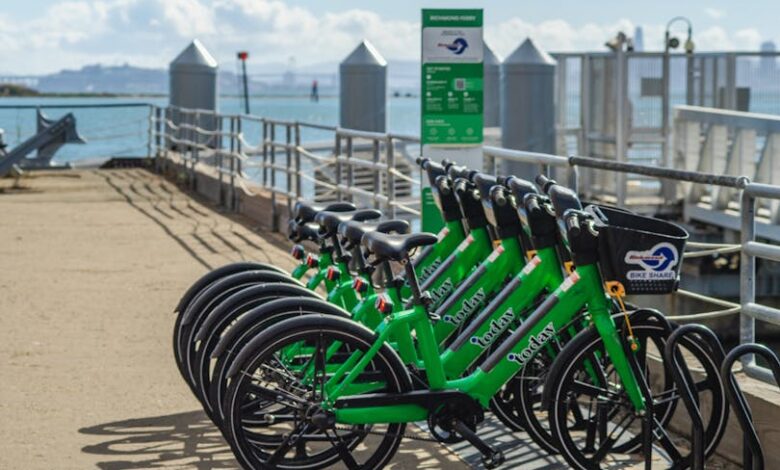The Dual Promise and Peril of Autonomous Vehicles

The dawn of self-driving cars promised a future of safer, more efficient roads. Enthusiasts envisioned a world free from human error, where autonomous vehicles navigated seamlessly, reducing traffic congestion and democratizing mobility. Yet, as this advanced technology transitions from concept to reality, a growing chorus of voices is raising critical questions about safety, accountability, and the current state of regulation. The path forward for autonomous vehicles, it appears, will not be as smooth as once predicted, especially as new groups emerge to challenge the status quo.
The Dual Promise and Peril of Autonomous Vehicles
Self-driving technology, often heralded as a transformative innovation, offers compelling benefits. Proponents highlight its potential to drastically cut down on accidents caused by human factors like distraction, fatigue, or impairment. Imagine a future where commutes are productive, parking is effortless, and transportation is accessible to individuals who cannot drive themselves.
However, the journey towards this autonomous utopia has been marked by unforeseen challenges. Incidents involving test vehicles, even those with safety drivers, have cast a shadow of doubt over the technology’s readiness. These events, ranging from minor fender-benders to tragic fatalities, underscore the inherent complexities of teaching machines to navigate the unpredictable real world.
Public trust remains a significant hurdle. While many are intrigued by driverless cars, a substantial portion of the population expresses apprehension about riding in them. This skepticism is not unfounded; it stems from a natural human cautiousness toward new, complex systems that operate beyond direct human control, especially when those systems are responsible for our safety on the road.
The intricate interplay of sensor technology, artificial intelligence, and real-time decision-making within autonomous driving systems is phenomenal. Yet, even the most sophisticated algorithms can encounter edge cases or unexpected scenarios that challenge their programming. This gap between controlled testing environments and the chaotic nature of public roads is a core concern for those advocating for stricter oversight.
A Unified Call for Stricter Oversight
In response to these burgeoning concerns, a new movement is taking shape, demanding more robust guardrails for the self-driving industry. This push isn’t just about isolated incidents; it’s about establishing a comprehensive framework that prioritizes public safety above all else. The urgency for such a framework is palpable, reflecting a broader desire for accountability in a rapidly evolving technological landscape.
Indeed, a Tesla Takedown alum has launched a campaign for stricter regulation of autonomous vehicles in the US. This initiative signals a growing dissatisfaction with the current, often fragmented, approach to regulating driverless car technology. The focus is on closing perceived loopholes and ensuring that rigorous standards are applied consistently across all manufacturers and operators.
Advocates for enhanced regulation point to the current patchwork of state laws and voluntary guidelines as insufficient. They argue that a lack of federal oversight creates an inconsistent landscape where self-driving car companies can operate with varying degrees of scrutiny. This inconsistency can lead to confusion for consumers and potential risks for road users across different jurisdictions.
The call for action extends beyond just setting basic safety thresholds. It encompasses demands for greater transparency in incident reporting, more stringent testing protocols, and clear lines of liability when accidents do occur. This holistic approach aims to address the multi-faceted challenges presented by autonomous vehicle safety, from the design phase to real-world deployment.
Moreover, the campaign emphasizes the importance of independent evaluation. Rather than relying solely on manufacturers’ self-assessments, proponents argue for third-party verification of autonomous vehicle systems. This could include performance metrics, cybersecurity audits, and a thorough review of how these vehicles respond to complex and unpredictable driving scenarios.
Navigating the Complexities of Self-Driving Car Regulation
Regulating self-driving cars is no small feat. It involves balancing the imperative for road safety with the desire to foster innovation. Overly restrictive regulations could stifle the very advancements that promise a safer future, while insufficient oversight risks public trust and, more importantly, human lives. Finding this equilibrium is the central challenge for policymakers and industry stakeholders alike.
One of the primary difficulties lies in the rapid pace of technological development. Autonomous vehicle systems are constantly evolving, with new software updates and hardware improvements being introduced regularly. This dynamic environment makes it challenging for regulatory bodies to keep pace, as traditional legislative processes are often much slower.
Defining liability in the event of an accident is another complex area. When a self-driving car is involved in a collision, who is at fault? Is it the vehicle owner, the software developer, the sensor manufacturer, or the system operator? Clear legal frameworks are needed to assign responsibility, ensuring that victims are compensated and that companies are incentivized to build safer systems.
Data collection and privacy also present significant regulatory hurdles. Autonomous vehicles gather vast amounts of data about their surroundings, their passengers, and the driving environment. Establishing clear rules around data ownership, usage, and protection is crucial to safeguarding individual privacy while still allowing for the data-driven improvements necessary for safety and performance.
Furthermore, there’s a need to differentiate between various levels of autonomous driving. Advanced Driver-Assistance Systems (ADAS), such as adaptive cruise control or lane-keeping assistance, are commonplace today. These are distinct from higher levels of autonomy where the vehicle performs all driving tasks under specific conditions or even all conditions. Regulatory clarity is essential to avoid public confusion and ensure appropriate safety expectations for each level.
Effective regulation will likely involve a collaborative effort between federal agencies, state governments, industry leaders, and public safety advocates. This multi-stakeholder approach can help ensure that regulations are informed by expert knowledge, practical considerations, and a deep understanding of the ethical implications of autonomous technology. The goal is to develop a robust, adaptable framework that can evolve alongside the technology it governs.
Conclusion
The emergence of a new road safety group targeting self-driving cars underscores a pivotal moment in the evolution of autonomous vehicles. As these sophisticated machines increasingly share our roads, the conversation shifts from mere technological capability to comprehensive societal integration. This includes establishing ironclad safety standards, ensuring transparent accountability, and fostering unwavering public confidence.
The call for stricter regulation is not an attempt to halt progress but rather to guide it responsibly. By demanding robust federal oversight, clearer liability, and independent verification, advocates aim to build a foundation of trust that will ultimately accelerate the safe deployment of autonomous technology. The future of mobility is undoubtedly autonomous, but its success hinges on our collective commitment to making that future not just innovative, but also demonstrably safe for everyone.
Engaging in this crucial dialogue and advocating for thoughtful, effective regulation is paramount. It ensures that as our roads transform, they do so with safety as the ultimate priority, securing a beneficial future for autonomous driving.





